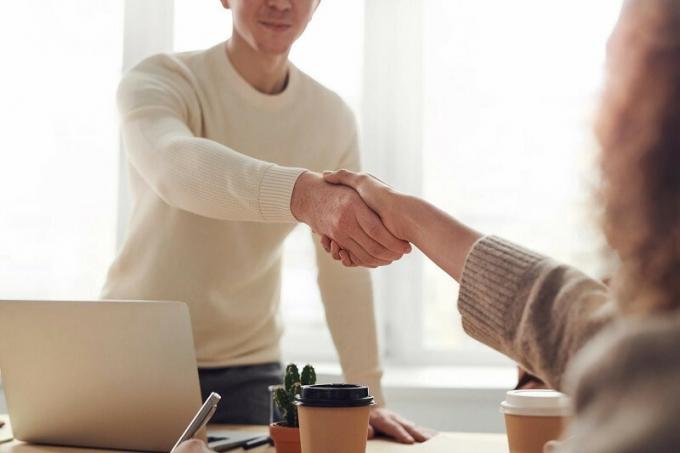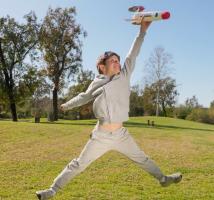The 6 types of group dynamics
Group dynamics are activities that, in addition to being fun, can be used to teach people of all ages, from children to the elderly.
These skills are often focused on improving the social skills of its members while having a great time interacting with their peers, whom they may have known for a long time or this is the Contact.
Next we will understand the importance of these activities, in addition to seeing the main types of group dynamics that exist.
- Related article: "Group Psychology: definition, functions and main authors"
What are group dynamics?
Group dynamics are activities with which several people interact to meet a specific objective through various fictitious situations. In them, the individual behavior of each of the members can be observed under the influence of the group.
They are activities in which the people involved are involved to be successful in achieving a goal, strengthening their relationships along the way.
These types of activities can be very varied, but all of them aim to promote contact between those involved, creating an idea of community, promoting coexistence and cooperation. These are exercises that, thanks to their great versatility, children, youth, adults and even the elderly can participate. That is why these dynamics can be very beneficial to promote any educational process.
Depending on the type of group dynamics, the number of people involved, the activities to be carried out and the objectives to be achieved will vary. Naturally, this will also influence the results in terms of the feeling of togetherness, the ties that are established between the members and also the type of skill that in them runs out developing. Nevertheless, As long as the facilitator is aware of the activity and makes sure that it runs properly, it will be a beneficial exercise for all.
Objectives of these dynamics
In all group dynamics the objective has to do with cooperative and relational competencies. Regardless of the specific skill to be put into practice, such as communication or conflict resolution, all of them imply learning to relate in a better way with others while reaffirming the idiosyncrasy of each individual.
Added to this, too cognitive skills such as attention, problem solving or decision making are put into practice. Group dynamics mean that those involved have to focus their attention on achieving certain goals, while at the same time make use of their social skills with others and, also, put their reasoning and intellect to the test to see how to achieve success.
Thus, the objectives of all these dynamics are improving social skills, leadership practice and cooperation, respect for others and reaffirmation of one's own uniqueness and the implementation of different cognitive and useful abilities for daily life. These activities help those involved to realize that great feats can be achieved through teamwork.
- You may be interested in: "Psychology of work and organizations: a profession with a future"
What are the types of group dynamics?
Now that we understand what group dynamics are and what their objectives tend to be, we go on to go into detail about the different types of group dynamics. These can be applied in all kinds of contexts and groups, being able to apply both in school and in the workplace or in a reception center for foreigners. All of them are applied to improve social skills and create greater group cohesion. Next we will see the main modalities:
1. Presentation dynamics
The type of dynamics that are surely used the most are presentation. As its name suggests, these are games in which the members introduce themselves to each other, being a very good way to break the ice between people who have had little or are complete strangers.
There are all kinds. There are activities in which those involved are ordered to put themselves in pairs and say their names, what is their favorite color, how old are they, what pet do they have, where are they, what do they work, what do they like to do in the bathtub... In short, any question that serves to promote a bit of knowledge among the members of the group.

2. Dynamics of conflict resolution
Conflict resolution dynamics are activities used to mediate problem situations. This kind of dynamics They are especially used in the workplace and in companies. They are useful because they put skills such as decision-making, leadership or teamwork to the test despite the fact that there has been some conflict.
They also serve to improve social skills and assertiveness among its members, introducing them to different tools that help solve a problem between two or more members such as a fight, an insult or a rumor.
3. Communication dynamics
The main objective of the communication dynamics is to improve communication skills among group members. Social skills require good communication skills to be demonstrated, and good communication itself is a social skill.
In dynamics you are it tries to promote, above all, active listening, in addition to assertive communication (say what you really want) and, also, you are taught to say things in a way that does not involve breaking the feelings of others. Body language is also put into practice.
4. Bloating dynamics
The dynamics of relaxation are used to release tensions. They are especially useful in children, making them release the restlessness that they may bring before starting other activities through laughter, movement and voice.
They yell, they speak loudly, they make movements as if they were having seizures... they make any movement and act that makes them then be calm, liberated, emotionally rested, and ready to pay attention to whatever the facilitator has to do with you say.
5. Dynamics of knowledge and self-knowledge
The dynamics of self-knowledge are applied so that the members of the group can know each other more each other despite already knowing a little about them after having done other activities.
The objective in this type of dynamics is not to meet new people, but delve into characteristics of people with whom they interact every day while comparing how they are themselves.
Personal knowledge is deepened while having a closer and more intimate relationship with others, seeing the contrast between oneself and others, valuing their individuality.
6. Dynamics of cooperation and collaboration
The dynamics of cooperation and collaboration are considered a fundamental pillar in any environment in which you want to promote ties between different people. What they do is enhance group cooperation by focusing on ensuring that all members of the activity have the same opportunities to participate.
Actually, in practice all activities are cooperative and / or collaborative insofar as they are always done in a group way and serve so that their members learn to relate to others people.



